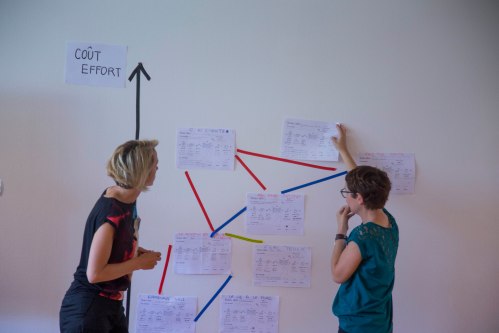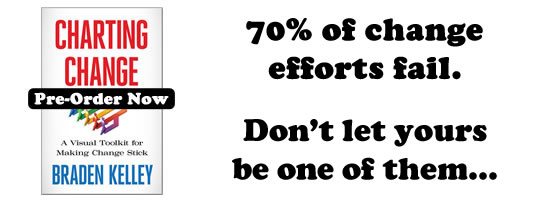Serious Games & Innovation Management: Hélène Michel on Cubification™
 Editor’s note: Hélène Michel is a researcher in innovative learning systems and an expert in serious games and gamification. She develops, imagines and experiments the digital tools that will be part of tomorrow’s classrooms. Innovation Excellence contributor, Nicolas Bry, shares his conversation with her.
Editor’s note: Hélène Michel is a researcher in innovative learning systems and an expert in serious games and gamification. She develops, imagines and experiments the digital tools that will be part of tomorrow’s classrooms. Innovation Excellence contributor, Nicolas Bry, shares his conversation with her.
Hélène Michel is a brilliant professor at Management School of Grenoble, with a Ph.D. in Management, a strong experience in innovation and gamification, and in charge of developing the business school strategy related to serious games. She tells us about her gamification approach for innovation, called Cubification.
1) NB: Can you tell us about your experience, and how you’ve developed your interest for gamification in innovation?
Hélène: I am a Professor in Innovation Management at Grenoble Ecole de Management. 13 years ago, I was finishing a Ph.D. on the topic on e-democracy. The idea was that all the great IT tools such as e-voting or online debates would change radically the way citizens participate in the public decision. And the result of my research was…nothing. In fact, these tools did not impact the way ideas emerge and decisions were made. People were not willing to participate more. At the very same time, a serious game was launched by an agricultural French Region with the aim to improve the image of farming after the mad cow crisis. And more than 500.000 people get involved in that game where you had to breed a cow, develop your crops etc. These people waked up at 5am to get connected to their account and go to the “virtual†market. They improved their knowledge and skills on various complex topics (EU funding etc.). I was so impressed that I decided to understand how game mechanisms impact on people motivation. My objective is to make non-experts participate to the innovation process.

2) NB: What are the key strengths of gamification that enhance the innovation process?
Hélène: Gamification is the use of game mechanisms in non-playful contexts. We all know situation or tasks that we feel are too complex, too boring or too easy for us. And we don’t want to take any time or energy to do them. Gamification is using emotional mechanisms such as curiosity, competition, personal challenge and role-play to involved people in these types of tasks. In the innovation process, we clearly need new points of view if we want to disrupt our classical models and imagine tomorrow’s ways of life, services or products. To do this many organizations launch open ideation platforms or events such as hackathons to collect ideas from non-experts. However, if nothing is done to make this accessible and engaging, there are few chances to have results. Gamification is therefore very useful to make people start, continue and finish a task, and then encourage others doing the same.

3) NB: You’ve developed an outstanding approach for gamification in innovation called Cubificationâ„¢, to unearth disruptive concepts: could you describe the main steps?
Hélène: The key idea is to make your innovation challenge tangible in order to manipulate it. So a Cubification session is run face to face, with 10 to 20 participants with one facilitator, during 1 intense day. We start “from scratch†and we finish the day with a roadmap of products and services that the company can launch in the future. To do this we use a specific cube (Let’s say one cube per team of 6 people). The first step is to customize your cube by identifying potential features related to your business model and intended market. This represents your model using 6 different dimensions. This cube represents your initial situation. Then you play: you mix your customized cube to generate combinations that will be the basis for your new offers. Finally, you ideate: you use the combinations presented on the cube faces to imagine different kinds of products, services, or concepts. The Cubification method empowers people to generate feasible, original and disruptive ideas for their business.
4) NB: Cubification approach is implemented in companies with the help of the consulting agency Opopoï: would you like to introduce them, and present the kind of assignments they complete?
Hélène: As an expert, I have developed this method and validated all the academic points. I am using it regularly in the academic context and I have run several sessions with major companies. I am currently writing a book on the topic. The Opopoï company is in charge of the diffusion of the method with professionals to be sure that participants can live the richest experience during the workshop. Opopoï CEO is my former student Mathias Salanon who found the method so inspiring that he suggested developing its scalability. From the idea to the market!
5) NB: Have you some example of Cubificationâ„¢ workshops completed for companies?
Hélène: Sure. We have a dozen of references so far. For example, we have worked with Somfy to imagine tomorrow’s housing. It was a one-day session with 20 participants. We have worked with Capgemini on the Digital Customer Experience (DCX) with 90 participants. We are currently with the United Nations (UNCTAD) to use this method to support social entrepreneurship in developing countries. We think that encouraging entrepreneurship (especially social entrepreneurship) is a way to support growth, create employment and reduce economic and social gaps. We have done the pilot and now we are starting looking for sponsoring: private companies willing to sponsor a Cubification session to support social entrepreneurship in various context. Anyone interested?
6) NB: Cubification is part of a broader scope of service offerings building an Innovation Journey: Generic Cube, Creativity App for creative employees profile, Story juice for ideation, Talent Profiling, matching profiles with projects, and Entrepreneurship programme. Could you briefly describe this comprehensive innovation story?
Hélène: Innovation is a journey. To get all your organization involved, Opopoï has developed a 9 months Innovation Journey. The programme is structured in 5 gamified steps, starting with the top managers during the Cubification session till an Entrepreneurship programme for potential innovators detected amongst the employees.

Wait! Before you go…
Choose how you want the latest innovation content delivered to you:
- Daily — RSS Feed — Email — Twitter — Facebook — Linkedin Today
- Weekly — Email Newsletter —
 Nicolas Bry is a senior VP at Orange Innovation Group. Serial innovator, he set-up creative BU with an international challenge, and a focus on new TV experiences. Forward thinker, he completed a thesis on “Rapid Innovationâ€, implemented successfully at Orange, further developed in his writings. He tweets @nicobry
Nicolas Bry is a senior VP at Orange Innovation Group. Serial innovator, he set-up creative BU with an international challenge, and a focus on new TV experiences. Forward thinker, he completed a thesis on “Rapid Innovationâ€, implemented successfully at Orange, further developed in his writings. He tweets @nicobry
NEVER MISS ANOTHER NEWSLETTER!
LATEST BLOGS
Three things you didn’t know about credit cards
Photo by Ales Nesetril on Unsplash Many of us use credit cards regularly. From using them for everyday purchases to…
Read MoreFive CV skills of a business-minded individual
Photo by Scott Graham on Unsplash The skills listed on a CV help employers quickly understand your suitability for a…
Read More





